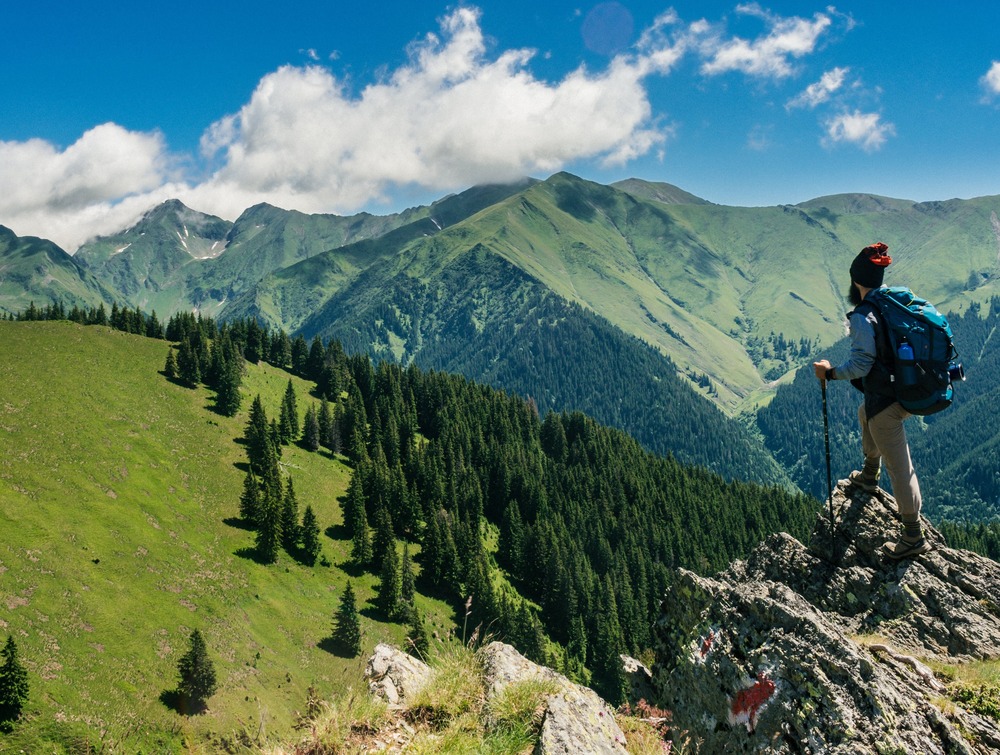Hiking is an activity that allows individuals to reconnect with nature, immerse themselves in scenic landscapes, and enjoy the benefits of physical exercise. For people with disabilities, the joy and therapeutic benefits of hiking can often be hindered by barriers that limit accessibility and inclusion.
However, with advancements in technology, awareness, and a growing emphasis on inclusivity, hiking for the disabled is becoming more accessible and enjoyable than ever before. So, grab a drink, sit back and read on about, “Hiking for the Disabled, Exploring Natures Beauty Without Boundaries”. Let`s get started.
Understanding the Challenges Faced by Disabled Hikers
Disabled hikers face a range of challenges that can vary depending on their specific disabilities. Mobility restrictions, sensory impairments, and chronic health conditions are some of the obstacles that need to be overcome. Understanding these challenges is crucial for creating an inclusive hiking experience.
Essential Preparations for an Inclusive Hiking Experience: Assessing Accessibility of Trails
Before embarking on a hiking adventure, it is important to assess the accessibility of the trails. Look for trails with paved paths, gentle slopes, and accessible facilities such as restrooms and parking spaces.
Online resources and apps dedicated to accessible hiking can provide valuable information about trail conditions and amenities.
Choosing the correct Equipment
Selecting the appropriate equipment is essential for a safe and enjoyable hiking experience. Consider using mobility aids such as wheelchairs, walkers, or hiking poles, depending on individual needs.
Additionally, specialized adaptive equipment like all-terrain wheelchairs or hiking prosthetics can enhance accessibility on challenging terrains.
Planning for Accommodations
When planning a hiking trip, it is crucial to consider accommodations that cater to the needs of disabled individuals.
Look for accessible lodging options, including cabins or hotels with accessible rooms and facilities. Ensure that the chosen accommodations are located in close proximity to accessible hiking trails.
Partnering with Supportive Organizations
Collaborating with organizations and groups that specialize in accessible outdoor activities can provide invaluable support and resources.
These organizations often offer guided hikes, equipment rentals, and training programs tailored for disabled hikers. Their expertise and experience can greatly enhance the hiking experience.
Techniques and Tips for Disabled Hikers: Physical Training and Conditioning
Preparing physically for a hiking adventure is essential. Engaging in regular exercise routines, including strength training and cardiovascular exercises, can improve stamina and endurance.
Consult with healthcare professionals or physical therapists to develop a training program that suits individual needs and abilities.
Utilizing Mobility Aids and Assistive Devices
For individuals with mobility restrictions, utilizing appropriate mobility aids and assistive devices is crucial.
Wheelchairs with all-terrain capabilities, hiking poles for stability, or braces and orthotics can significantly enhance mobility and safety on the trails.
Overseeing Drug Regimens and Health Disorders
Individuals with chronic health conditions must prioritize their well-being while hiking. It is important to carry necessary medications, stay hydrated, and monitor any warning signs or symptoms.
Consult with healthcare providers to ensure proper management of health conditions during outdoor activities.
Adopting Adaptive Hiking Techniques
Disabled hikers often develop adaptive techniques to overcome challenges encountered on the trails.
These techniques can include using modified grips for holding hiking poles, practicing seated or low-impact exercises during breaks, or utilizing visual or auditory aids for navigation.
Accessible Trails and Destinations for Disabled Hikers: Coastal Trails with Breath-taking Views
Coastal trails offer stunning views and serene environments for disabled hikers to enjoy. Trails with accessible boardwalks or paved paths along the shoreline provide an inclusive experience.
Notable accessible coastal trails include the Pacific Rim Trail in Canada and the South West Coast Path in the United Kingdom.
disabilityhorizons.com
Tranquil Forest Paths for Nature Lovers
Forest paths provide a tranquil setting for disabled hikers to immerse themselves in nature.
Many national parks and recreational areas offer accessible trails that showcase the beauty of forests while accommodating different accessibility needs.
Examples include Muir Woods National Monument in California, USA, and the Forest of Dean in England.
Mountain Hiking with Accessible Routes
For those seeking a more challenging hiking experience, there are mountain trails with accessible routes.
These trails often have gradual inclines, wide paths, and resting points along the way.
Mount Rainier National Park in Washington, USA, and the Peak District in England are popular destinations for disabled hikers.
news.motability.co.uk
www.pathsforall.org.uk
Exploring Wildlife in National Parks
National parks around the world are increasingly focusing on providing inclusive hiking opportunities.
Accessible trails within these parks allow disabled hikers to explore diverse ecosystems and encounter fascinating wildlife.
Some notable examples include Yellowstone National Park in the USA and the Lake District National Park in England.
Inspiring Stories of Disabled Hikers: Overcoming Challenges and Achieving Milestones
Many disabled hikers have defied limitations and achieved remarkable feats in the world of hiking. Their stories inspire and encourage others to embrace the outdoors.
From scaling mountains to completing long-distance hikes, these individuals showcase the incredible strength and determination of disabled hikers.
Community Support and Inclusive Initiatives
Communities and organizations dedicated to inclusive hiking play a vital role in supporting disabled hikers.
Through group hikes, workshops, and advocacy efforts, these initiatives promote inclusivity and raise awareness about the challenges faced by disabled individuals.
They provide a sense of belonging and support for disabled hikers.
The Benefits of Hiking for People with Disabilities: Physical Health and Fitness
Hiking offers numerous physical health benefits for disabled individuals. It improves cardiovascular fitness, builds strength and endurance, and promotes weight management.
Regular hiking can also enhance flexibility and joint mobility, leading to improved overall physical well-being.
Psychological Health and Tension Alleviation
Spending time in nature and engaging in physical activity through hiking has proven mental health benefits.
It alleviates tension, worry, and melancholy, encouraging a state of calm and fostering an overall feeling of positivity.
The peaceful and serene environments encountered while hiking contribute to mental rejuvenation.
Connection with Nature and Social Opportunities
Hiking allows disabled individuals to connect with nature, fostering a sense of appreciation and awe.
It provides opportunities for social interaction and camaraderie with fellow hikers, creating a supportive and inclusive community.
Hiking groups and organized events offer avenues for making new friends and sharing experiences.
Inclusive Hiking: Spreading Awareness and Advocacy. Promoting Universal Design in Outdoor Spaces
Creating inclusive hiking experiences involves promoting universal design principles in the development of outdoor spaces.
This includes designing accessible trails, facilities, and amenities that cater to individuals with disabilities.
Collaboration between government bodies, environmental organizations, and disability advocacy groups is essential to drive these efforts.
Engaging the Hiking Community in Inclusivity Efforts
Encouraging the hiking community to embrace inclusivity is crucial for fostering a welcoming environment.
Hiking clubs, organizations, and individual hikers can play an active role by supporting accessible initiatives, volunteering at adaptive hiking events, and spreading awareness about the needs of disabled hikers.
FAQs (Frequently Asked Questions)
Can people with various types of disabilities go hiking?
Yes, individuals with various disabilities can go hiking.
With proper preparations, adaptive equipment, and accessible trails, hiking can be enjoyed by people with mobility restrictions, sensory impairments, and chronic health conditions.
www.stylist.co.uk
www.walkingandhiking.co.uk
www.audubon.org
How can I find accessible trails in my area?
There are several resources available to find accessible trails in your area.
Online platforms, mobile apps, and websites dedicated to accessible hiking provide information about trail accessibility, amenities, and user reviews.
Additionally, contacting local disability organizations or park authorities can offer valuable insights.
www.americantrails.org
canalrivertrust.org.uk
www.accessiblecountryside.org.uk
www.alltrails.com
What should I consider when choosing hiking equipment?
When choosing hiking equipment, consider individual needs and abilities.
Consult with healthcare professionals or adaptive equipment specialists to identify the most suitable mobility aids, assistive devices, and gear.
Comfort, durability, and ease of use should be prioritized.
momgoescamping.com
hikegenius.com
Are there hiking groups specifically for disabled individuals?
Yes, there are hiking groups and organizations specifically tailored for disabled individuals.
These groups organize inclusive hikes, provide support, and foster a sense of community among disabled hikers.
Research local organizations or online communities that focus on inclusive outdoor activities.
go.discovernac.org
www.sportinmind.org
www.camphighhopes.com
How can I support and contribute to inclusive hiking initiatives?
You can support inclusive hiking initiatives by volunteering your time or resources.
Participate in adaptive hiking events, assist with trail maintenance and improvement projects, or contribute to organizations that promote inclusivity in outdoor spaces.
Spreading awareness about the importance of accessibility is also impactful.
www.disabledhikers.com
www.mintridgefoundation.org.uk
www.whitelodgecentre.co.uk
Conclusion
Hiking for the disabled is an enriching and empowering experience that breaks down barriers and allows individuals to connect with nature.
By understanding the challenges faced by disabled hikers, making necessary preparations, and utilizing adaptive techniques, the joy of hiking can be enjoyed by everyone.
Through increased accessibility, inclusive initiatives, and community support, we can create a hiking landscape that is open to all.


